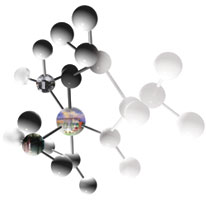 |
Since the founding of Stanford Research Park in Menlo Park, Calif., in the 1950s, research parks have seen an explosion of growth. Now, their development is tied to life sciences, a field seen by its practitioners as being on the verge of an historic breakthrough. It is fed by investment from sources as disparate as venture capitalists, academia, corporations, philanthropists and government that see the investment as an economic engine, attracting high-paying jobs and further development.
"The cluster of industries feed off each other," acting as a magnet for more investment, says Bill Drohan, executive director of the Association of University Research Parks, Rockville, Md. Drohan points to several ambitious initiatives involving a "patchwork quilt" of financing and a "big splash" of government funds.
Florida has lured Scripps Research Institute to Palm Beach County. The La Jolla, Calif.-based nonprofit is planning a 364,000-sq-ft facility for biomedical science, drug discovery and technology development, to open in 2006. The county is providing land and $137 million for construction. Startup costs are financed by $310 million in federal economic development funds. Officials hope Scripps presence will attract other research facilities, biotechnology and pharmaceutical firms and residential, commercial, recreational and cultural development.
| RELATED LINKS |
| R&D Market Is Industry�s New Testing Lab |
| Public, Private Sectors Are Busy Chasing R&D�s Frontiers |
In Aurora,Colo., Fitzsimons Redevelopment Authority will spend $4.3 billion from sources that include private philanthropy, the state and the U.S. Economic Development Administration to transform a 578-acre former Army medical center into a campus for patient care, education and basic and bioscience research. Fitzsimons will provide space for startup biotechnology, drug-development and medical device firms.
A biotechnology cluster also is emerging in Arizona. In Phoenix, a $46-million headquarters for the International Genomics Consortium and the Translational Genomics Research Institute is on track for a November completion, according to its design-build contractor, DPR Construction Inc., Redwood City, Calif. It will be part of a 1-million-sq-ft public/private biotechnology research campus that will include the Arizona Biomedical Collaborativea $17-million joint initiative of the University of Arizona and Arizona State University.
|
On its main campus in Tempe, ASU is building the first $52-million, 176,000-sq-ft facility for the Biodesign Institute. The planned 700,000-sq-ft complex, for biotechnology, information technology and nanotechnology, is financed in part by a state research infrastructure bill passed in 2003. It provides the university with $14.5 million each year for 24 years for lease-purchase financing.
Design was under way before the April 2003 appointment of its director, George Poste, a scientist with experience in academia and industry and an impressive track record in drug development. "If you build it, they will come," says Jerry Percifield principal of Lord, Aeck & Sargent, Atlanta. The firm, with Gould Evans, Phoenix., is the projects architect.
Flexibility is key, since occupants are not always identified before construction and because the tenure of researchers can be short, typically five to seven years. "If an institution is doing the same research it was five years ago, it is probably...
